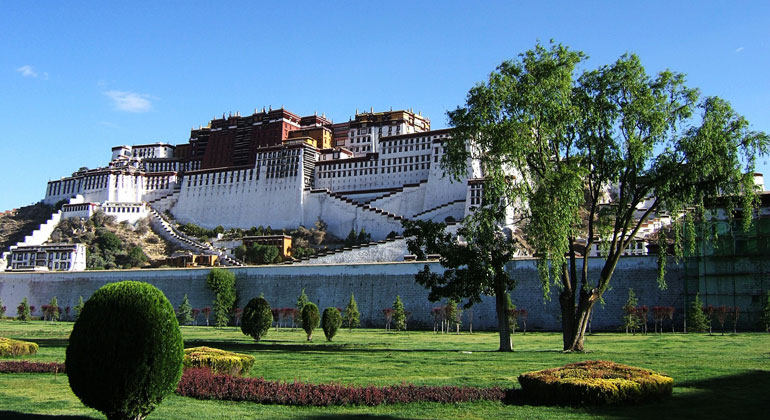Amazon heat drives Tibet temperatures: climate tipping elements connected half around the globe
While the Amazon rainforest and the Tibetan Plateau sit on different sides of the globe, scientists now discovered that changes in the South American ecosystem can trigger changes in the vicinity of the Himalayas.
Both are tipping elements, hence large-scale elements of the planetary machinery that are sensitive to global warming and may shift abruptly and often irreversibly from one state to another at specific thresholds. A new study applies the theory of complex networks to these elements and finds surprising – and worrying – long-distance linkages.
“Logging, road construction and warming are already today stressing the Amazon rainforest, and will likely do so even more in the future – and while the Amazon region is of course an important Earth system element by itself, it’s also a burning question if and how changes in that region could affect other parts of the world,” explains Jingfang Fan from Beijing Normal University, China, and the Potsdam Institute for Climate Impact Research (PIK) in Germany. “For the first time, we’ve now been able to robustly identify and quantify these so called teleconnections. Our research confirms that Earth system tipping elements are indeed inter-linked even over long distances, and the Amazon is one key example how this could play out.”
Analysis of air temperature changes in 65.000 subregions in the past 40 years
The researchers analyzed near-surface air temperature changes in a grid of more than 65.000 subregions, regarded as nodes, they put on the globe, using data from the past 40 years. By doing so, they could see how changes at one node influenced those at another one. They succeeded to detect a pronounced propagation pathway over more than 20.000 kilometers – from South America via Southern Africa to the Middle East and finally to the Tibetan Plateau. This pathway can be explained by the main atmospheric and oceanic circulation patterns.
In a next step, the researchers used state-of-the-art climate computer simulations to see how global warming, caused by greenhouse gas emissions from burning fossil fuels, might modify the long-distance linkages until 2100. “We’ve been surprised to see how strongly climate extremes in the Amazon are connected to climate extremes in Tibet,” says Jürgen Kurths from PIK, a co-author of the paper. “When it’s getting warmer in the Amazon, it also does so in Tibet, hence for temperature there’s a positive correlation. It’s different for precipitation. When we have more rain in the Amazon, there’s less snowfall in Tibet.”
The researchers detected the early warning signals based on the snow cover data and reveal that the Tibetan Plateau has been losing stability and approaching a tipping point since 2008. “This has been overlooked so far,” says Kurths. Despite its remote location, the Tibetan Plateau is relevant for a lot of people’s livelihoods due to its role as an important water reservoir.
“This is a risk we should rather avoid”
“Our research underlines that tipping cascades are a risk to be taken seriously: inter-linked tipping elements in the Earth system can trigger each other, with potentially severe consequences,” says Hans Joachim Schellnhuber from PIK, also a co-author. “To be clear, it’s unlikely that the climate system as a whole will tip. Yet, over time, sub-continental tipping events can severely affect entire societies and threaten important parts of the biosphere. This is a risk we should rather avoid. And we can do so by rapidly reducing greenhouse gas emissions and by developing nature-based solutions for removing CO2 from the atmosphere.”
- Teng Liu, Dean Chen, Lan Yang, Jun Meng, Zanchenling Wang, Josef Ludescher, Jingfang Fan, Saini Yang, Deliang Chen, Jürgen Kurths, Xiaosong Chen, Shlomo Havlin, Hans Joachim Schellnhuber (2023): Teleconnections among tipping elements in the Earth system. Nature Climate Change [DOI:10.1038/s41558-022-01558-4]








